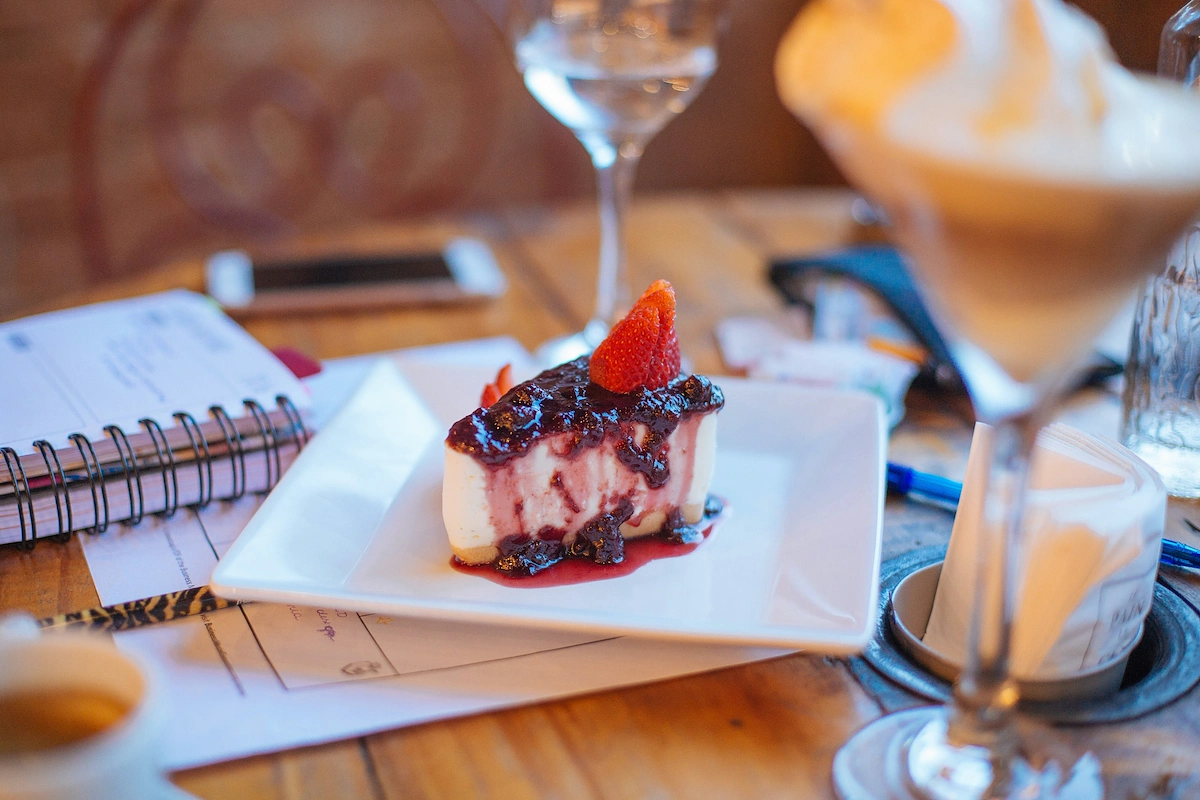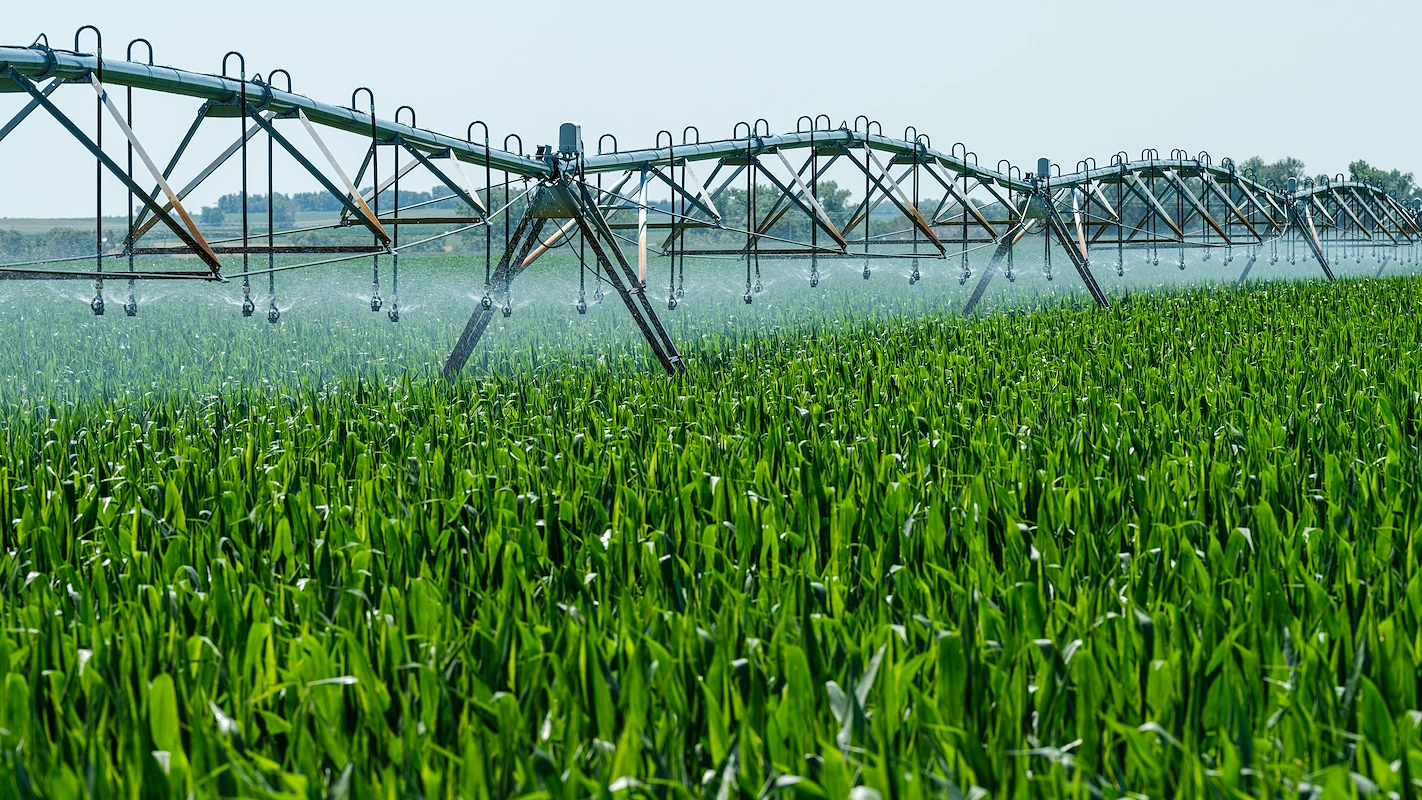Starting a cottage food business is a rewarding venture that combines your culinary passion with business savvy. The industry is worth billions, with steady demand for homemade goods at farmers' markets, community events, and online.
This guide will take you through the practical steps of validating your business concept, obtaining necessary licenses, acquiring equipment, and building supplier relationships to help you launch a successful cottage food business in the U.S.
Step 1: Plan your business and validate your idea
Start by visiting local farmers' markets. See what products draw crowds and what tables are empty. This direct observation is more valuable than any online report. Many new sellers skip this, assuming their favorite recipe will be an automatic hit.
You can also check online. Look at local foodie groups on Facebook or browse Etsy for sellers in your state. Use Google Trends to compare search interest for your product ideas, like "keto brownies" versus "gluten-free scones," in your region.
Understand your startup costs
Speaking of planning, let's talk money. Your initial investment will vary, but most cottage food businesses have similar expense categories. A clear budget helps you start on solid financial ground and avoid surprises.
Expect to spend $50 to $200 on state and local permits. Upgraded kitchen equipment might run $300 to $1,000. Initial ingredients and professional packaging could add another $200 to $550. This brings your total startup range to between $550 and $1,750.
Here are 3 immediate steps to take:
- Visit two local farmers' markets and note the top three best-selling product types.
- Create a simple budget spreadsheet with estimated costs for permits, equipment, and ingredients.
- Use Google Trends to check the popularity of your top two product ideas in your city.
Step 2: Set up your legal structure and get licensed
First, decide on a business structure. Forming a Limited Liability Company (LLC) is a smart move because it separates your business and personal assets. Many new owners start as a sole proprietorship to save money, but this leaves your personal finances at risk if the business is sued.
With an LLC, profits pass through to your personal tax return, which avoids double taxation. You can file for an LLC through your state's Secretary of State website for about $50 to $200. The process usually takes a few weeks to complete.
Once your structure is set, you need to navigate the food laws. Your state's cottage food law is your primary rulebook. Search online for "[Your State] cottage food law" to find specifics on what you can sell, sales caps, and where you can sell your goods.
These rules are usually managed by your state's Department of Health or Agriculture. You will also likely need a food handler's permit, which you can get online for $10 to $15. Finally, contact your city clerk for a local business license, which costs $50 to $100 annually.
Here are 4 immediate steps to take:
- Research your state's specific cottage food law and annual sales limits.
- Decide between forming an LLC or operating as a sole proprietorship.
- Complete an online food handler's safety course for your permit.
- Contact your city or county clerk's office about a local business license.
Step 3: Secure your insurance and manage risk
Your homeowner's policy almost never covers business activities. A customer's allergic reaction or a kitchen fire related to your business could leave you personally liable. Separate business insurance is what protects your personal assets from these risks.
Key insurance policies to consider
General liability insurance is your foundation, as it covers claims of injury or property damage. For a food business, ensure this includes product liability, which specifically handles issues like foodborne illness. A $1 million policy is standard and often required by markets.
Annual premiums for this coverage typically range from $400 to $900. You might also look into business property insurance for expensive equipment. If you use your car for deliveries, a commercial auto policy is necessary as personal auto insurance will not cover business use.
You can get quotes from providers that specialize in food businesses. The Food Liability Insurance Program (FLIP), Next Insurance, and Hiscox are popular choices because they understand your specific risks and offer tailored online applications.
Here are 4 immediate steps to take:
- Review your homeowner's policy to confirm its business activity exclusions.
- Get online quotes for a $1 million general liability policy from FLIP and Hiscox.
- Ask potential insurers if their general liability policy includes product liability coverage.
- Check the insurance requirements for two local farmers' markets you plan to sell at.
Step 4: Set up your kitchen and source equipment
Organize your workspace
Your home kitchen is your new headquarters. Most cottage food laws do not have square footage rules, but they do require a sanitary space. Designate specific cabinets and counter areas for your business to prevent cross-contamination with personal food. Check with your local health department for specific storage rules.
Invest in the right equipment
It is tempting to use your personal kitchen gear, but it often cannot handle the volume. A basic commercial-grade 20-quart mixer costs about $300 to $600 and will outlast multiple consumer models. Also, plan for a digital food scale ($30) and half-size aluminum baking sheets ($15 each).
You can find good deals on new and used items at WebstaurantStore or a local restaurant supply outlet. Refurbished equipment can cut your initial costs by 30-50% without a big drop in quality. This is a smart way to manage a large upfront purchase.
Source packaging and ingredients
Professional packaging from suppliers like Uline or Paper Mart makes your product look legitimate. Order samples first to ensure your items fit perfectly. When you buy ingredients, look for suppliers that offer bulk discounts. Your local Costco or a restaurant supply store are great starting points.
Here are 4 immediate steps to take:
- Designate and clear a dedicated shelf and counter space for your business.
- Check your local health department website for home kitchen regulations.
- Price out a refurbished 20-quart stand mixer on WebstaurantStore.
- Order packaging samples from Uline to test with your products.
Step 5: Set up payment processing
Choose your payment methods
A frequent mistake is accepting only cash. This can limit your sales, as many customers expect to pay with cards or digital wallets. Plan to accept credit, debit, and mobile payments from day one to maximize your revenue at markets and events.
Find a cost-effective solution
When you review payment solutions, focus on transaction fees and portability. Many processors charge between 2.5% and 3.5% per sale and may require extra hardware. For a mobile business, you need a simple option that works on your phone without extra devices.
For cottage food businesses that need to accept payments on-site or on-the-go, JIM offers a streamlined solution. With JIM, you can accept debit, credit, and digital wallets directly through your smartphone. Just tap and the sale is done.
At just 1.99% per transaction with no hidden costs or extra hardware needed, it is particularly useful for selling at farmers' markets. Other payment solutions often have higher fees, which can add up quickly.
- Get Started: Download the JIM app for iOS.
- Make a Sale: Type the sales amount, hit sell, and ask your customer to tap their card or device on your phone.
- Access Funds: Your money is available right on your JIM card as soon as the sale is done. No waiting for bank transfers.
Here are 3 immediate steps to take:
- Decide which payment types you will accept beyond cash.
- Compare the transaction fees of different payment solutions.
- Download the JIM app to see how it works for your business.
Step 6: Fund your business and manage finances
Most cottage food businesses are self-funded, but you have options if you need capital. The SBA Microloan program offers loans up to $50,000 through local nonprofits. Interest rates are typically 8-13%. Kiva also provides 0% interest crowdfunded loans up to $15,000 for small businesses.
Manage your day-to-day finances
Once you have funds, open a separate business checking account. Many new owners make the mistake of mixing personal and business money, which creates a headache for taxes and makes it hard to see if you are profitable. A dedicated account keeps your records clean from day one.
You should also track every dollar that comes in and goes out. A simple spreadsheet is enough to start. List your income from each market and categorize all expenses like ingredients, packaging, and fees. This habit helps you manage cash flow and prepare for tax season.
Plan to have enough working capital to cover your first six months of operation. This includes ongoing costs for ingredients, market fees, and marketing. A good estimate is between $1,800 and $3,000 to ensure you can operate smoothly without immediate sales pressure.
Here are 4 immediate steps to take:
- Research one local SBA Microloan lender in your area.
- Open a separate business checking account at your bank.
- Create a simple spreadsheet to track all your income and expenses.
- Calculate your estimated working capital needs for the first six months.
Step 7: Hire help and streamline your operations
Decide when to hire your first employee
Most cottage food businesses start as a one-person show. You should only consider hiring when you cannot keep up with orders. A good benchmark is when your labor cost for a new hire would be 25-35% of your revenue. For example, you need about $4,000 in monthly sales to support a part-time employee who works 20 hours a week at $15 per hour.
Define roles and find the right people
Your first hire will likely be a part-time Kitchen Assistant or Market Sales Help. A kitchen assistant handles prep and packaging, while market help manages your booth. Expect to pay between $15 and $20 per hour. A frequent misstep is to hire friends without a formal job description, which can cause problems later.
Whoever you hire to handle food must have a Food Handler's Permit, just like you. The process is the same online course they can complete in a few hours. This ensures they understand food safety rules and protects your business.
Manage your daily workflow
With a team member on board, you need to organize your schedule. You do not need complex software. A shared Google Calendar or the free tier of a scheduling app like When I Work is perfect for assigning market shifts or prep days. Also, document your recipes and processes so your products remain consistent no matter who makes them.
Here are 4 immediate steps to take:
- Calculate the monthly revenue you need to support a part-time hire.
- Draft a simple job description for a "Market Sales Help" position.
- Check your state's website for employee food handler permit rules.
- Explore the free version of When I Work to see how it fits your needs.
Step 8: Market your business and acquire customers
Build your online presence
Start with a business profile on Instagram and Facebook. Post high-quality photos of your products and use local hashtags like #[YourCity]Food or #[YourNeighborhood]Eats. A common misstep is to post and wait. Instead, actively engage by responding to comments and running a simple giveaway to grow your following.
Use in-person opportunities
At the market, your booth is your best advertisement. Use clear signage and offer free samples. A customer who tries your product is far more likely to buy. This is also the perfect time to collect email addresses with a simple clipboard sign-up sheet for a weekly newsletter.
Once you have that email list, send updates on your market schedule and new items. An email open rate of 20-30% is a good target. You can also partner with a local coffee shop to feature your pastries, giving you access to their customer base for a wholesale price.
Here are 4 immediate steps to take:
- Create an Instagram business account and identify 10 local food-related hashtags.
- Design a simple email sign-up sheet to use at your market booth.
- Draft your first weekly email newsletter template.
- List three local businesses that could be potential collaboration partners.
Step 9: Price your products for profit
Calculate your costs first
Before you set a price, you must know your exact costs. Calculate the cost of goods sold (COGS) for one batch. This includes all ingredients, packaging, and labels. For a batch of 24 cookies that costs $12 in materials, your COGS per cookie is $0.50.
Choose your pricing strategy
The simplest method is cost-plus pricing. You multiply your COGS by three or four to get your retail price. That $0.50 cookie should sell for $1.50 to $2.00. This markup covers your time, overhead, and profit. Many new sellers underprice because they forget to pay themselves.
Once you have a baseline, check competitor prices at local markets and online. If your price is much higher, make sure your quality or packaging justifies it. Do not just copy prices without knowing your own numbers, as your costs might be different.
Your goal is a gross profit margin of 65-75%. To find this, use the formula: (Sale Price - COGS) / Sale Price. For a $2.00 cookie with a $0.50 COGS, your margin is 75%. This confirms your business is financially healthy.
Here are 4 immediate steps to take:
- Calculate the cost of goods sold (COGS) for one batch of your signature product.
- Research prices for three similar products at a local farmers' market or on Etsy.
- Apply a 3x markup to your COGS to set a baseline price.
- Calculate your gross profit margin to ensure it is above 65%.
Step 10: Maintain quality and scale your operations
Establish your quality standards
As your business grows, consistency is your most important quality standard. The 100th brownie you sell must taste identical to the first. A frequent mistake is to eyeball ingredients when rushed. Use a digital scale for every batch and document your recipes with precise weights.
You can also measure quality through customer loyalty. Aim for 20-30% of your market sales to come from repeat customers. If people keep coming back, your quality is high. Track this informally at first by just recognizing faces at your booth.
Know when to grow
The biggest signal to scale is your state's annual sales cap. Once you approach this limit, you must move to a commercial kitchen to continue operating legally. This is not a soft guideline, so plan for this transition well before you hit the ceiling.
With growth in mind, consider your production capacity. If you consistently sell out hours before the market ends, it is time to hire help. This allows you to bake more product and meet demand instead of leaving money on the table each week.
When spreadsheets get messy, look at specialized software. An app like Bake Diary helps you manage recipes, cost ingredients, and track inventory. This frees up your time from administrative work so you can focus on baking and selling.
Here are 4 immediate steps to take:
- Document your main recipe with precise weights, not just volumes.
- Set a goal to track your return customer percentage at your next market.
- Confirm your state's cottage food sales cap and calculate how close you are.
- Explore the features of an app like Bake Diary to see if it fits your needs.
Conclusion
You now have the recipe for a successful cottage food business. The key is to focus on quality and consistency from day one. Your customers will notice. You have a solid plan, so take that first step with confidence.
And when you make that first sale, getting paid should be simple. JIM lets you accept cards right on your phone, with no extra hardware and a simple 1.99% fee. Download JIM to be ready from day one.















